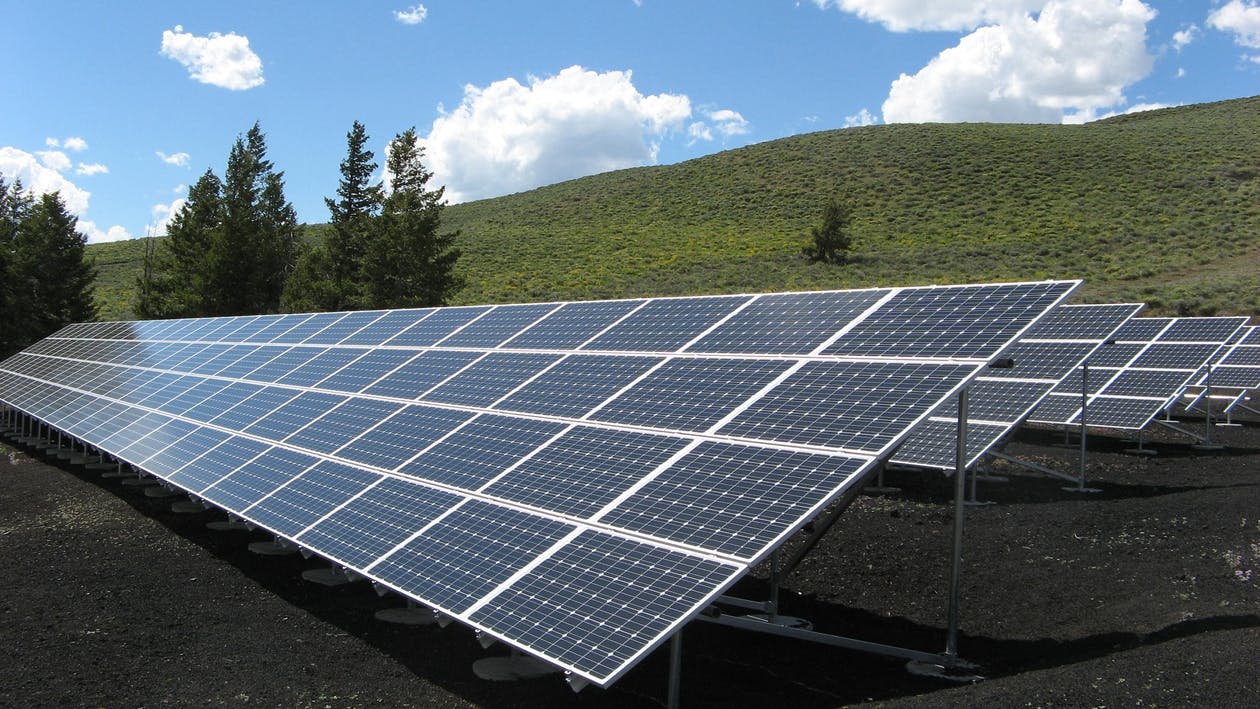Energy Futures
Thought leadership articles by experts at The University of Manchester
on decarbonisation, fuel poverty, energy storage, the future of nuclear power and more.
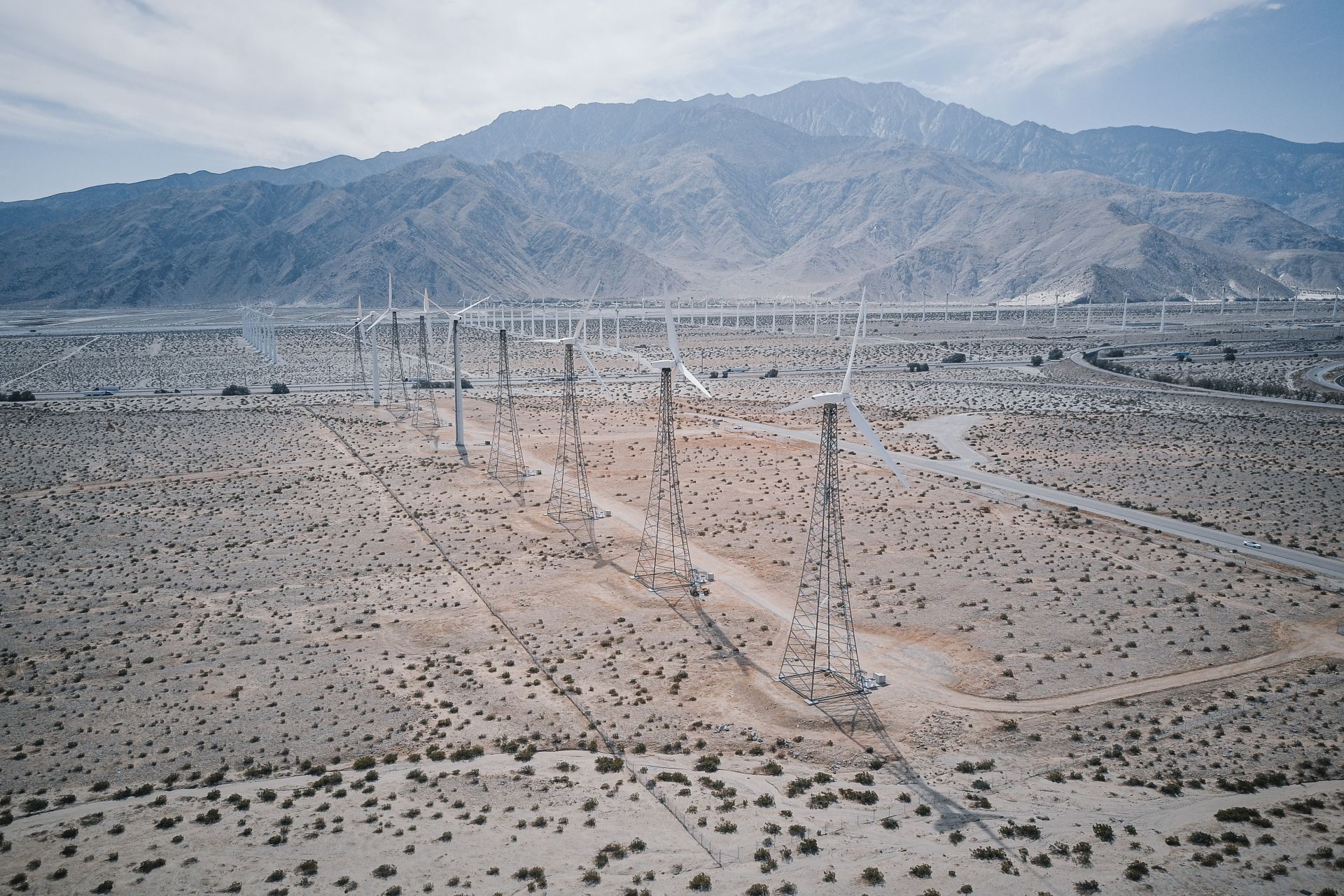
Electrification – Technology and People
Mike Barnes
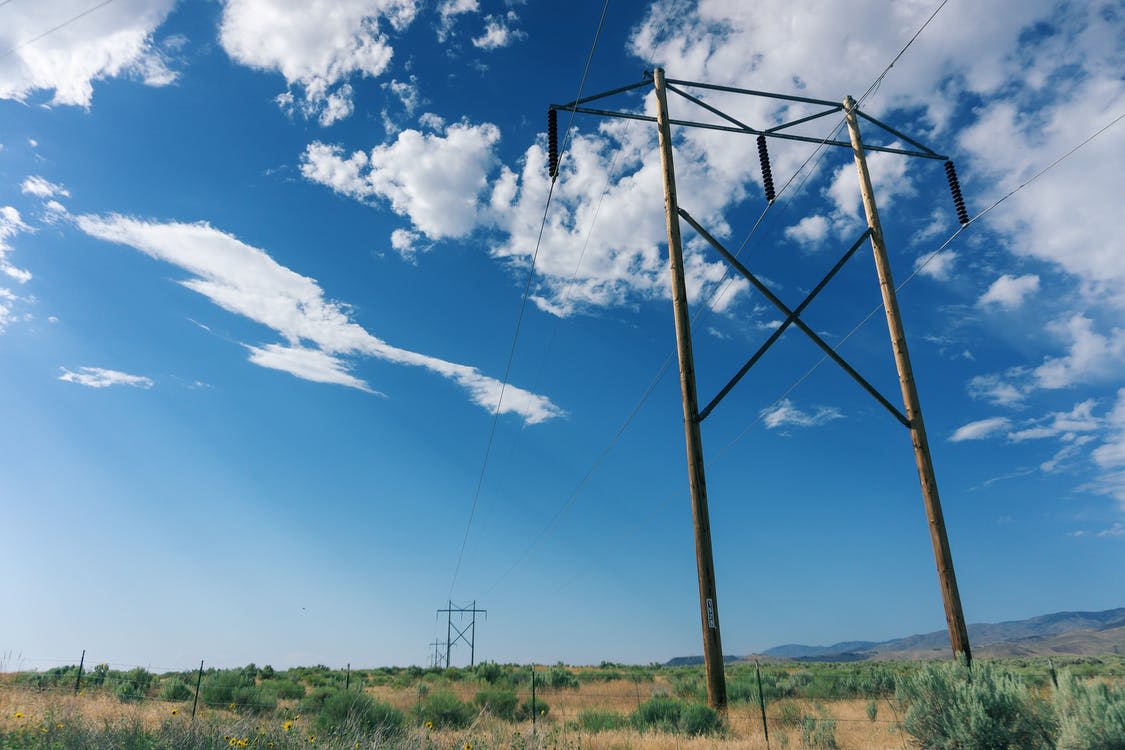
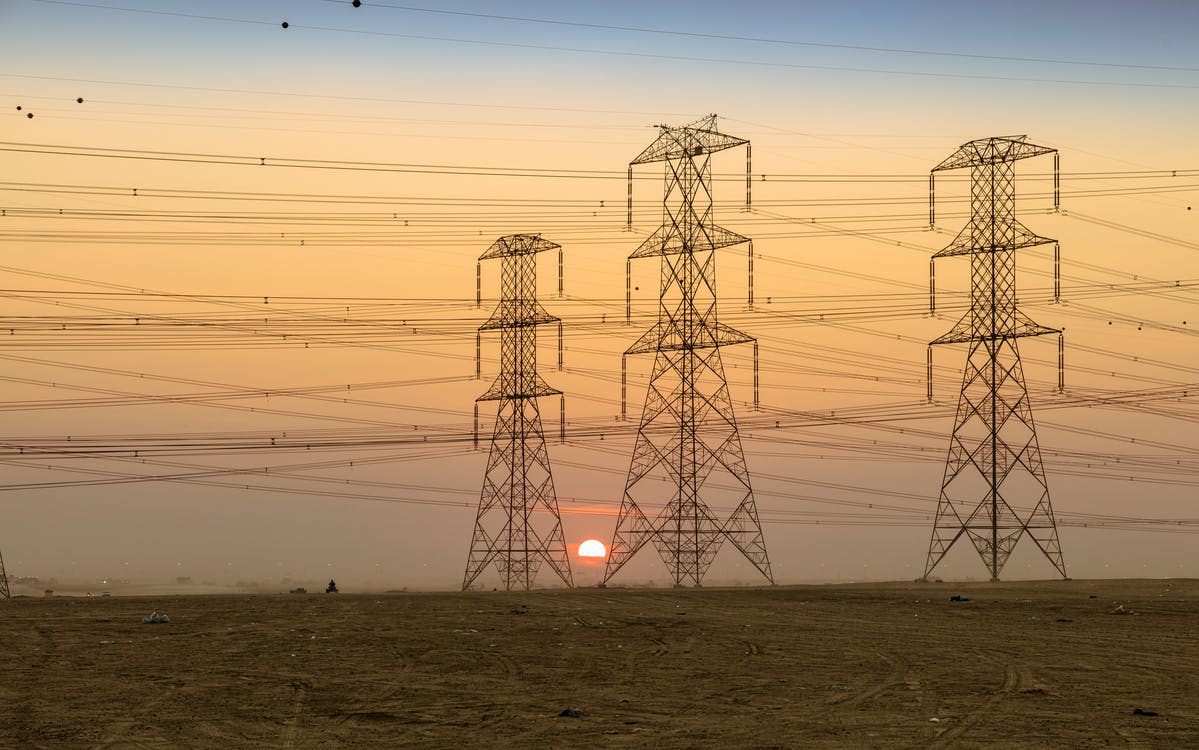
The drive to achieve Net Zero is underpinned by the principle that as a society we should ensure that we leave this planet better off, and indeed make it better for the next generation. Smart electrification is a key part of this. This is the combination of technology and human behaviour; it means electricity can’t just be seen as ‘this thing that happens when we put a plug in the wall-socket.’ Consumers mut be strongly informed and included in planning. This means society needs to start making important decisions now, as part of an extended planning process. Industry and government have started thinking about this in detail. Now is the time to start with effective consumer engagement to make sure the UK population can make wise choices that support this process. Fundamentally we have to ask how are we going to live in the coming decades?
Here, Mike Barnes breaks down the issues around transition to a sustainable energy supply, the key role electrification will play in this, and makes policy recommendations to support a transition which doesn’t leave anyone behind:
- Clear and sustained policy strategy is needed to give a stable investment environment for all groups ranging from large businesses to individual consumers.
- Investment in a diverse portfolio of solutions to avoid having ‘all our eggs in one basket’
- R&D to identify and avoid technology and material bottlenecks. This includes appropriate risk assessment through the supply chain to ensure resilience, and an expansion of mechanisms to translate R&D into industrial impact based on current best practice.
- Improved public consultation and engagement plans, for example a public awareness campaign publicising the information provided by the Energy Savings Trust and other similar organisations, and an expansion of their content.
Replacing fossil fuel, utilising technology
Electrification is important because it allows us to replace a lot of our fossil fuel consumption with low-carbon electricity, be it solar, off-shore wind or nuclear. This however means a lot more energy needs to go through the electricity network. If we electrify all transport, the amount of energy carried by the electrical network doubles compared with today. If we electrify heating, it doubles again to four times today’s amount. Obviously building a grid four times as big isn’t feasible – not only would a grid four times larger take up a lot of space, it would also be an expensive solution. So, we need to use our existing grid better through advanced technology and smarter use; as well as undertake some expansion where necessary.
Widespread computerised sensing and control (digitisation) has a key role to play here – for example by continuously measuring how we use our existing electrical infrastructure, networks can be turned into into ‘smartgrids’, so that we can use their capacity to carry power better. We can also use new materials and advanced designs to make substations more compact and get more power through them. Advanced materials can be used to produce new ultra-high-power subsea power cables down the East and West coasts, reinforcing the existing network and avoiding overhead lines.
Cables are power lines buried in the ground, and are of course more expensive than overhead lines, so we need to make use of modern technology to get the most out of them. Here using high power semiconductors to convert electricity from alternating current to direct current allows more effective use of long cables. This even allows us to employ very long subsea cables and interconnect them, constructing an offshore power grid. Such a grid would be a cost-effective and reliable way to connect offshore wind to shore, would allow us to reduce the number of substation sites on land, and would even allow us to connect to other countries. This access to overseas electrical infrastructure and the ability to trade electricity could help reduce prices.
Including everyone in the conversation
In addition to technology development there need to be some important but more basic actions taken. For instance not everyone’s household connection at present would support vehicle charging – and sometimes reinforcing this will mean upgrading a connection on the neighbours’ property. Policymakers need to talk to, not just at, people. The planning documents provided by government and industry are on the whole very good, but are typically aimed at, unsurprisingly, government and industry. There needs to be a push to engage all of us in what should be a national conversation about how we want to live and how we use electricity and energy.
Guidance and policy should consider all electricity users. Guidance that we use public transport and cycle/walk to work is fine if you have good personal mobility and live in London, with access to a great tube network. But not so helpful if you’re a care worker in rural Cumbria with a large number of home visits to do each day. People might be forgiven for thinking much of the discussion has been aimed at young, fit suburban professionals, with a driveway for their electric car to sit charging, a large roof to put solar cells on, and a large garden for ground-source heat pumps. Arguably it’s important to address groups with the financial power and freedom to make independent changes quickly. But they are just one of many groups and everyone needs to be included, with particular care taken over vulnerable groups in society.
As well as transportation, heating needs to be considered and, as we’re seeing hot summers, cooling. How will the conversion of gas-powered appliances and heating work? The systems we need to be installing in new homes, or in refurbishments to older homes, vary depending on if we’re heating with electricity from offshore wind and nuclear; or if we decide to use hydrogen, or other carrier molecules to move energy. Technology and policies are still evolving. We need to be clear about this, and also when people can have an evidence-based set of government and industry plans, around which they can plan and build their lives.
Learning from the past, building a sustainable future
The solutions energy strategies and policy need to offer have to be affordable in the short and longer term – we can’t cut corners now, only to store up problems which lead to a future crisis. This means policymakers need to consider the benefits that diversity in the power supply can bring. The 1990s ‘dash for gas’, where lots of gas-fuelled power stations were built, may have kept prices down then, but we are now regretting the lack of longer term thinking. Policymakers should learn and realise that putting ‘too many eggs into one basket’ is a bad idea. We are unlikely ever to be able to choose a strategy which is continuously the best. A wind farm is typically built for 25 years, a power network for 50 years and more. The best placement, layout and strategy in one decade won’t necessarily be the best in the next. A portfolio approach, trying to avoid serious pitfalls, is a balanced way forward to try and navigate this.
We not only have to have a sustainable supply: we also have to have a sustainable supply chain. This requires substantial investment by industry and commerce, so a stable business environment needs to be created by a clear and sustained policy environment that supports such investment.
We need to make sure that we don’t create a system that is dependent on one resource that is beyond our control. This might be true for example of certain rare-earth elements, or specific battery component materials. Suitable R&D into potential risks, and ways to mitigate them, needs to be funded.
The switch to locally sourced generation, e.g. renewables helps move us towards energy independence, but this is not without complications. There is some excellent research and development in energy storage being undertaken to help manage the intermittent nature of renewables. Industry and academia need to ensure that this is translated to industrial impact, and a resilient supply chain. The support mechanisms for this need to be expanded, for example building on the best of the track record of the Catapults, the Carbon Trust and UKRI.
We must undertake an energy transition that is reliable, affordable and makes the UK economy robust in the face of future changes. This means policymakers, government and NGOs need to talk with people so the public, understand what is coming doing the road towards us as consumers and can act appropriately. Likewise decision makers need to understand and act on the public’s real concerns. Government and industry need to keep investing in technology and people, to make sure that the UK has the skills and ability to upgrade the UK’s infrastructure. This will allow the UK to become the world-leading powerhouse in this field that we clearly have the potential to become.
This all translates to a lot of work at local policy and industrial level that is typically complex, difficult and doesn’t tend to grab the headlines. But it is vital ‘behind the scenes’ work that we can’t do without. Its role needs attention and recognition. Although we have to start on the process very quickly, electrification is not a sprint, it is a marathon. And we have to engage everyone to ensure that we can sustain that initial spark of innovation and enthusiasm.
Mike Barnes is a Professor in the Power Conversion group in the School of Electrical and Electronic Engineering. He has developed research interests in High Voltage DC Transmission, Offshore Wind Energy and Flexible AC Transmission Systems. He is an Associate Editor of the IEEE Transactions on Energy Conversion.
Making sustainable business models for green electricity attractive to the mainstream
Jonatan Pinkse
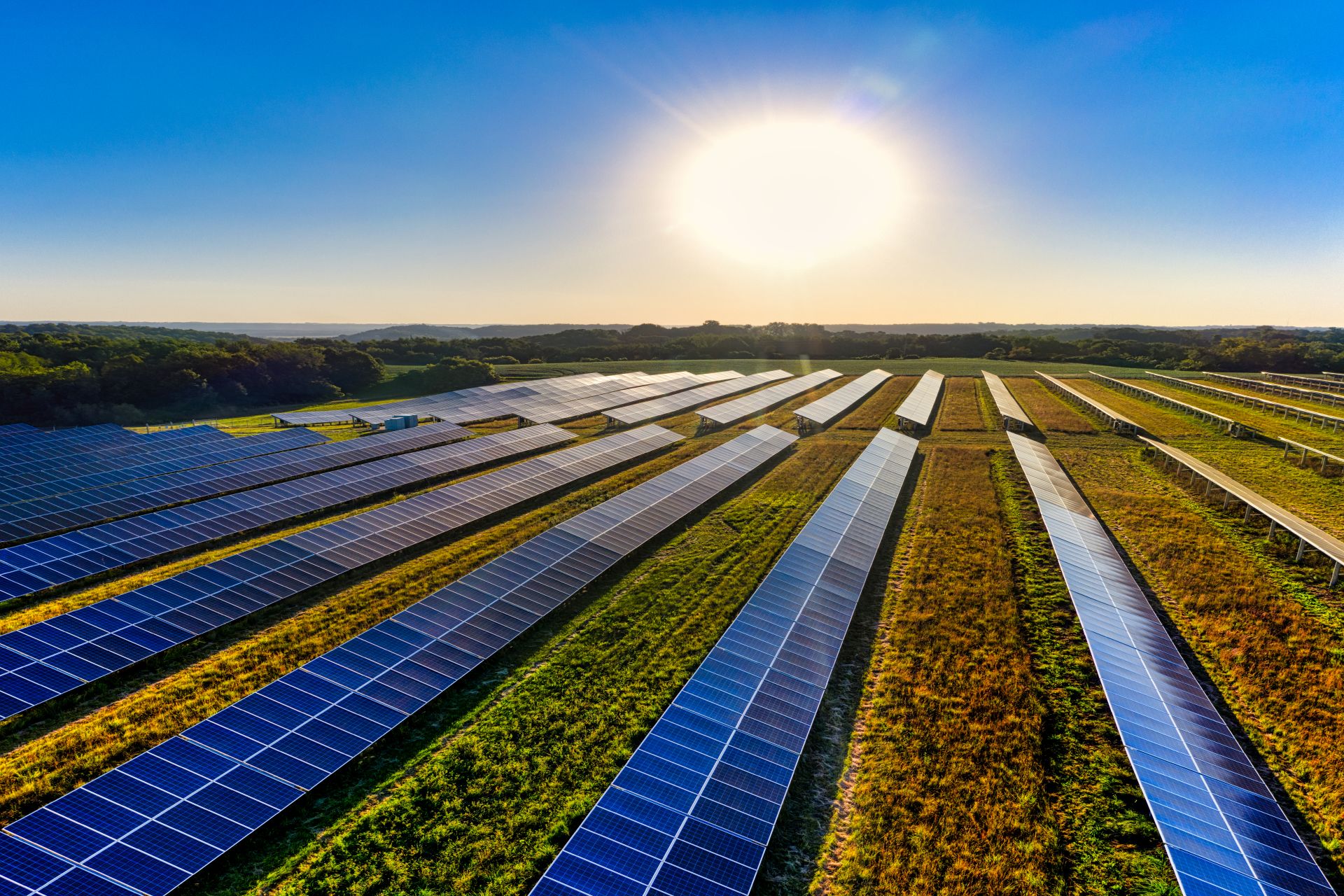
Scaling up green electricity is key to achieving net zero. While the government has made progress in supporting solar PV and offshore wind, technologies alone will not make for a successful transition to net zero. To be successful in the market, technologies need an attractive business model. In this blog, Professor Jonatan Pinkse discusses how green entrepreneurs have created mainstream support for their business models and how policymakers can help them in this process.
- Business models play a key role in the transition to net zero. The government should not only support green technology but also listen to the needs of entrepreneurs and help them scale up their innovative business models.
- Public policy can help entrepreneurs with innovative business models for green electricity such as that hinder their roll-out.
- If customers are willing to pay more for electricity generated locally, fairly or by friends and family, government should take this into account and bring in measures to change the nature of energy demand.
The key role of business models for net zero
We need to make the energy economy more sustainable to avoid the disastrous impacts of climate change. However, a transition to net zero involves a fundamental change in how companies operate and make money. Current business models that focus on making profits are no longer viable in a net-zero future. But what will replace them? What will the business models of the future look like? And how can market leaders be convinced to change a winning recipe? While current business models have proven themselves, it is far from certain if they can keep their revenue streams going with sustainable business models.
There are many sustainable business models out there, but only a few have managed to become mainstream. Sustainable business models struggle to take hold in a world where most money is still made by companies that pollute the planet. So how do entrepreneurs designing sustainable business models for energy supply get support for their ideas even if they challenge mainstream views of what customers like and are willing to pay for?
In our latest publication, we show how entrepreneurs in the Dutch electricity industry managed to achieve public support for their business model of selling green electricity. For decades, the electricity industry was dominated by a business model where vertically integrated utilities generate electricity in large power plants using fossil fuels. However, pressures to decarbonise, digitalize and deregulate the industry have created opportunities for new players to enter the market with innovative business models. We found that entrepreneurs followed well thought out approaches to make their sustainable business models attractive to mainstream customers. So, what they did they do?
Lessons from green energy entrepreneurs
Mainstream business models to sell electricity are built on the idea that ‘cash is king’. Price and reliability determine what customers choose and nothing else. Our study found that entrepreneurs made sustainable business models attractive by changing the way their customers see what makes green electricity valuable. While they did not ignore the importance of price and reliability, they also stressed other benefits customers could get from green electricity. Some unique selling points were giving customers autonomy over where their electricity comes from, who produces their electricity, and how their electricity is produced.
Entrepreneurs, together with NGOs, also had to change consumer perspectives on traditional energy business models. Partly through guerilla marketing, they planted a seed in people’s minds that the big utilities could not be trusted to drive the transition to net zero. A good example of this is the influential start-up, Vandebron which, offered to acquire a coal-fired power plant for €1 million only, with the plan to close it down. Vandebron tried to prove that the current owner, Nuon, wasn’t willing to shut down its fossil fuel operations. The entrepreneurs made people aware, too, that most green electricity on offer wasn’t generated in the Netherlands but just the outcome of a paper exercise where utilities buy green certificates to claim that their coal generated electricity is green. By shaming existing utilities, entrepreneurs created space for their own offer as people started looking for alternative suppliers, selling truly green electricity.
The entrepreneurs also lobbied continuously for regulatory changes that made it possible to roll out alternative ways of electricity supply such as peer-to-peer delivery and community microgrids. Such regulatory changes are still much needed in the UK, too. Currently, peer-to-peer energy trading is not possible because only suppliers with a license are allowed to engage in energy transactions on the grid. For British green entrepreneurs to have similar success as their Dutch counterparts, they still rely on getting regulatory changes such as the proposed “Local Electricity Bill” through Parliament.
Customers value local and fair energy
Letting people see that green electricity has many benefits and suggesting that market leaders cannot be trusted to deliver on net zero meant that Dutch entrepreneurs managed to show that doing things differently is possible and can bring economic success. By dismantling the idea that companies can only be successful in the industry when a low price is offered, they showed that some people are willing to pay a bit more if the electricity is generated locally or if it means a fair price is paid to those producing the electricity. Even if the electricity itself does exactly the same, powering our appliances, the entrepreneurs used their sustainable business models to show that people value where their electricity comes from and how it is produced. Debunking myths about success in the industry opened the eyes of market leaders who have started acquiring start-ups with sustainable business models that have proven themselves. Government energy strategies should consider this, and cut support for fossil fuels, while creating subsidies and support for renewable energy and for locally produced “green” electricity initiatives.
Unfortunately, these sustainable business models are not yet dominating the industry. There is still a long way to go. But the entrepreneurs and NGOs have managed to show that alternative ways of creating value is possible and they have helped the market leaders diversify, offering truly green electricity delivered in a host of different ways including energy platforms and peer-to-peer delivery. People now have far more choice in going green and policymakers should take this into account. The UK government are attempting to work towards net zero at the same time as navigating an energy crisis. Supporting green energy is key – creating fairer conditions for collective production and consumption of renewable energy. Electricity is greener when it is produced locally. In 2013, the Dutch introduced a postcode scheme which allows benefiting from tax reductions on consumed electricity produced in the same or a nearby post code. This has recently been changed from a tax reduction to a subsidy. Such initiative would be a welcome addition to Government energy strategy, as it stimulates people switching to renewable energy generation, also when they don’t have a roof suitable for solar panels themselves. It would move the Government energy strategy away from a sole focus on supporting the supply side to making changes to the nature of energy demand.
Jonatan Pinkse is a Professor of strategy, innovation, and entrepreneurship at and Executive Director of the Manchester Institute of Innovation Research (MIoIR), Alliance Manchester Business School, The University of Manchester. His research interests focus on corporate sustainability, business model innovation, social entrepreneurship, cross-sector partnerships, and the sharing economy.
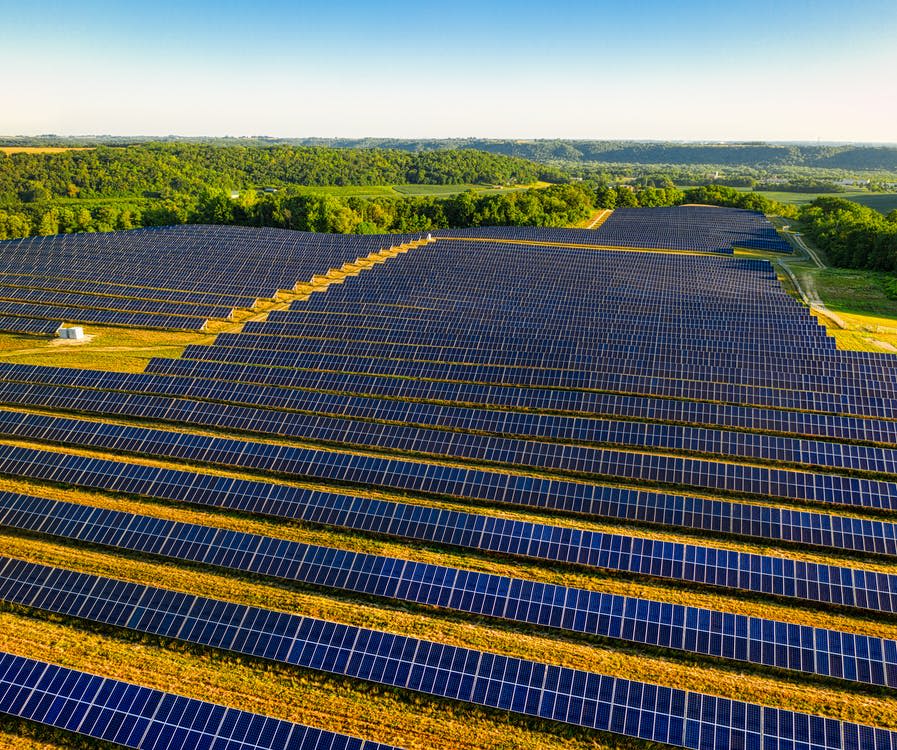
The Energy Security Strategy: Going nuclear
Francis Livens
The government in April announced plans to build eight new nuclear reactors in the UK, alongside strategies to boost wind, hydrogen, and solar production. These new reactors are intended to improve the UK’s energy self-sufficiency and reduce greenhouse gas emissions, as well as creating thousands of new jobs. In this blog, Professor Francis Livens of the Dalton Nuclear Institute breaks down what these plans mean, and the best routes to meeting them.
- If all of the goals in the new strategy are met, nuclear could provide 20 – 25% of our electricity needs by 2050.
- However, this requires rapid action on the part of policymakers, expediting planning approval and minimising our dependence on global supply chains.
- In parallel, the same urgency has to be given to developing new reactors which will meet our low-carbon energy needs beyond the end of the decade.
As we start to see the shape of government’s energy security plans, it’s clear they require a fundamental change in the way we ‘do nuclear’. We aren’t going to accelerate from one reactor a decade to one a year, and then onwards to 24 GW (about 15 Hinkley Point C reactors) by 2050, without transforming the whole sector. It’s worth unpicking some of what this plan means.
What are we going to build?
At the moment, the only stations planned or under construction in the UK are EdF’s European Pressurised Water Reactors (EPR), at Hinkley and potentially Sizewell, with two reactors at each site. This is a mature design so deployment will be limited by the supply chain – you order specialist nuclear components many years in advance – and workforce availability. Realistically, if we started today, we’d be doing incredibly well to get Sizewell C operating by the end of the decade, so EdF aren’t going to get us beyond half way to our eight reactors.
If we look elsewhere, there is interest from an American consortium in building two Westinghouse AP1000 reactors at Wylfa on Anglesey. This reactor has already been approved by the UK regulators but has a mixed history, with four operating in China, while some American projects are going badly wrong. The design is workable; the challenge is delivering the project.
Finally, there are ‘Small Modular Reactors’ (SMR). These are quite different in conception, with the aim being to build them in kit form in a factory and then assemble them on site. One contender is the Rolls-Royce SMR. Nobody’s built one of these so far, but it is based on well-understood technology (so not too risky), and the design started the regulatory approval process earlier this month. Approval could take up to four years, and construction of the first reactors a further four or five years, so there’s no slack here if we’re to meet the end-of-decade goal. What’s more, a lot depends on how much risk Rolls-Royce might be prepared to take; for example, building factories and manufacturing components in advance of regulatory approval. With a fair wind, we could have a couple of these by 2030.
The biggest risk on the 2030 timescale is therefore not really the technology, but our ability actually to deliver these big, complex projects – a problem that’s not unique to nuclear or the UK, as we see from the American AP1000 projects, London 2012, or HS2. Setting realistic budgets and schedules will be crucial to ensuring this project is delivered in time to meet the goals laid out in the strategy.
What else do we need?
Nuclear energy isn’t just about the reactor. You need a site to build on and, while it’s likely that all the pre-2030 reactors would use existing nuclear sites, it might be necessary to smooth the transfer of land from the current owner (probably the Nuclear Decommissioning Authority) to the new build developer. There are also several other strands of planning and similar activity which would need to be expedited.
Regulatory approval, which is often seen as a blockage, doesn’t have much impact on the programme before 2030. The EPR and AP1000 have already been approved, though acceleration could take a year or so of the SMR timeline. It might have more impact if other designs came into the frame, but those are more likely beyond 2030, or if we want to introduce advanced technologies, such as the use of digital simulations in design.
The biggest risk is around project delivery. The UK has a nuclear supply chain and a skilled nuclear workforce, but these are spread across decommissioning, new nuclear, and defence, all of which present increasing demand. We are also dependent on global supply chains for some critical elements, and as a result will be in competition with other countries which are following similar thought processes to us. There is no point in having everything ready to go, and then finding yourself waiting 3 years for the reactor pressure vessel.
You can mitigate the supply chain and skills risks by giving the sector confidence to invest, but that requires clarity and commitment from government, and – perhaps hardest of all – a seamless approach across multiple government departments. The new strategy provides a solid framework; the challenge is in ensuring its goals are met on time and at cost, and will require a clear and consistent vision from policymakers.
If we do all this, though, we could just about get to 2050 with nuclear providing 20-25% of our electricity, more or less its historical contribution, and compensating for the loss of the ageing fleet of current reactors between now and 2030.
Beyond 2030?
Even if we act urgently up to 2030 and achieve everything in these energy security plans, we will not have solved our energy problems. Energy is not just electricity (about 40% of UK energy use is electricity; the other 60% is largely fossil fuels) and we have a legally binding commitment to Net Zero by 2050, so we have to keep our eyes on that longer term goal. Nuclear has a potential role here too, since High Temperature Gas-cooled Reactors (HTGR) can provide the heat needed to, for example, decarbonise energy intensive processes such as steel making. This was recognised in the 2020 Energy White Paper, but HTGRs are much less mature and, if we don’t push on with them in parallel with the immediate activities, they won’t be ready when we need them.
The IPCC has recently made it clear that the time is now to act on climate change. While new nuclear won’t come online in time to ensure greenhouse gas emissions peak in the next three years, rapid progress in the sector today will ensure we lock in a low-carbon future for the decades ahead.
Francis Livens is Director of The University of Manchester’s Dalton Nuclear Institute and Professor of Radiochemistry. He has acted as an advisor to the nuclear industry both in the UK and overseas and holds a range of external roles, including Chair of the Nuclear Innovation and Research Advisory Board (NIRAB) and a member of the Nuclear Decommissioning Authority Board.
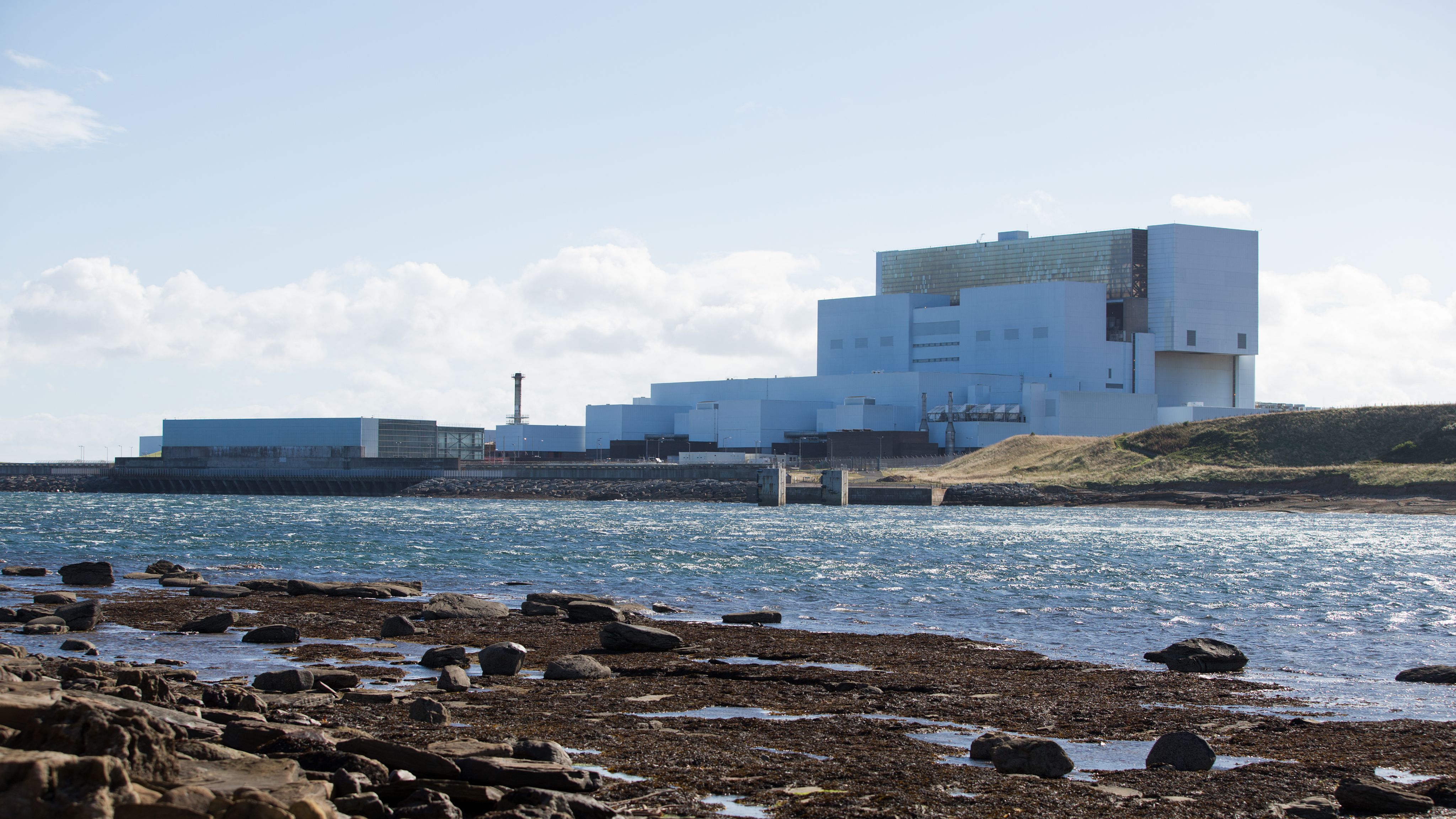
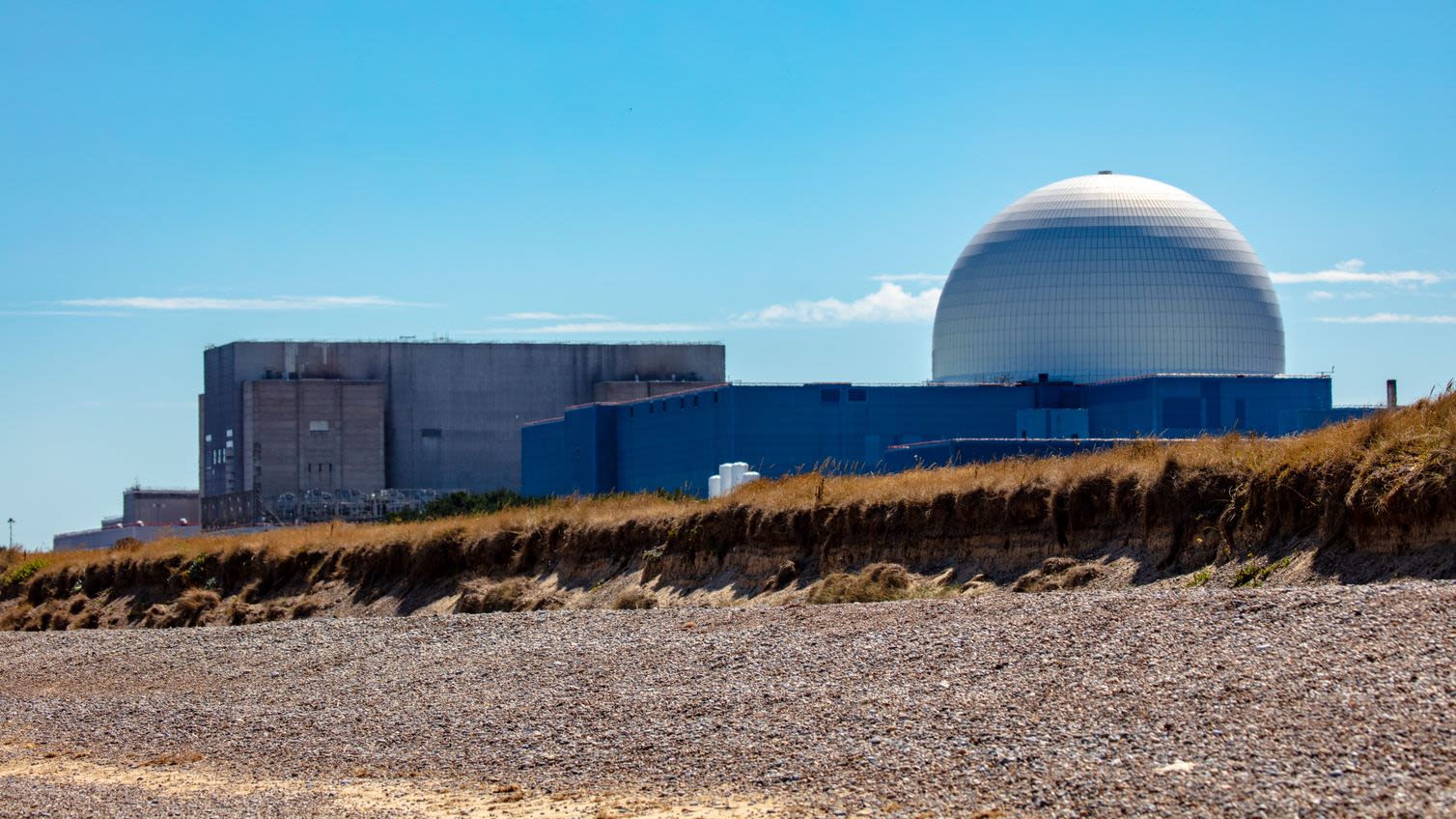
How to incentivise bioenergy with carbon capture and storage responsibly
Rob Bellamy
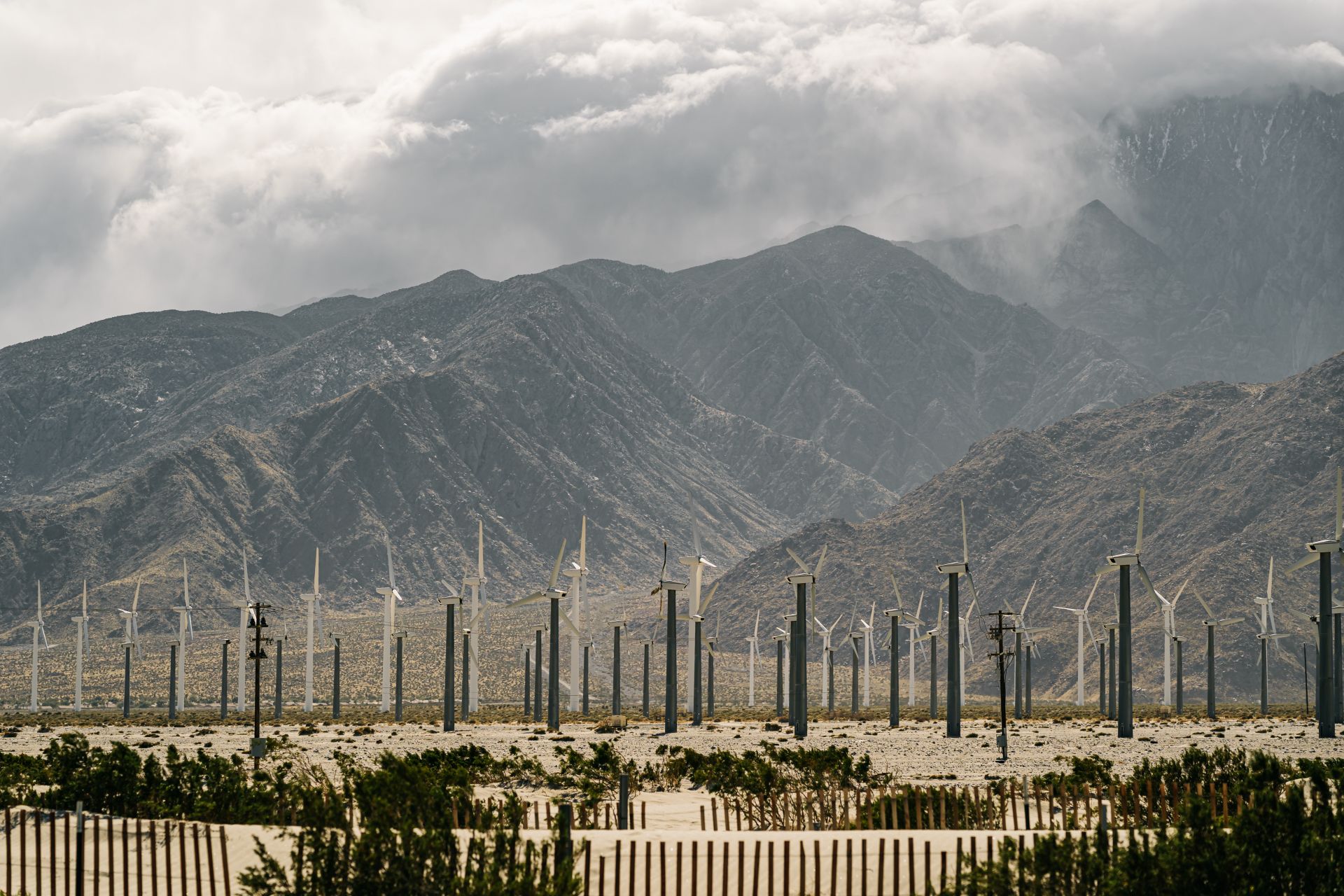
The latest IPCC report on the state of the world’s climate shows that the remaining carbon budget – the amount of CO2 that can still be emitted while keeping global warming below 1.5 degrees – is almost gone. To meet net zero within these parameters, we will need to remove CO2 that is already in the atmosphere. One method of achieving this is by using bioenergy with carbon capture and storage (BECCS). However, BECCS is not yet ready for use at scale, and raises societal concerns around land use for biomass, the safety of stored carbon, and potential distraction from emissions reductions. Here, Dr Rob Bellamy from the Department of Geography explains his recent research into how BECCS might be incentivised responsibly, by accounting for public and stakeholder preferences.
- Nearly 80% of the British public know nothing or only a little about BECCS. However, once it is explained to them, 72.8% of participants were supportive.
- Public acceptability of BECCS will be determined as much by the ways in which it is incentivised and governed as by its technical characteristics. Policymakers need to be mindful of the unintended consequences their choices can have.
- Stakeholder policy preferences reflect geographically varying societal values and interests. Policymakers need to account for the diversity of these perspectives that will ultimately determine the success—or failure—of their policy designs.
What is BECCS and why are public and stakeholder attitudes important?
Bioenergy with carbon capture and storage (BECCS) is an approach to carbon dioxide removal (CDR) which involves generating energy through burning biomass (such as wood and agricultural products, solid waste, landfill gas and biogas or ethanol and biodiesel) coupled with the capture and storage of the resulting CO2, in geological or other long-term reservoirs, such as depleted oil and gas reservoirs.
Despite growing interest in BECCS, it will not come forward without strong institutional support and significant new incentives for research, development, demonstration and deployment. One particularly understudied question concerns how it might be incentivised responsibly, by accounting for public and stakeholder preferences for policy development. This is an urgent question to address, given that BECCS forms a significant part of plans to reach net zero, and that it is unlikely to be rolled out widely if decision makers do not take advantage of the social intelligence that can be gleaned from diverse citizens, industries, non-governmental organisations, scientists, and other governmental policymakers and officials.
Our research
Our two studies set out to explore diverse public and stakeholder preferences with respect to the development of policy for BECCS.
In the first study, we used a combination of quantitative and qualitative methods to compare public perceptions of BECCS in three different policy scenarios. The motivation behind this approach was to understand how alternative policy scenarios might affect perceptions of that technology. We found that the type of policy instrument used to incentivise BECCS significantly affected perceptions of the technology itself. In particular, there was a great deal of opposition towards a price guarantee scheme – where government would guarantee a higher price for producers selling energy derived from BECCS. This stemmed from participants’ knowledge of the high costs being imposed on taxpayers by this mechanism, in order to support new nuclear energy provision (notably in relation to Hinkley Point C).
On the other hand, we found a high level of support for another supportive instrument, fixed payments (whereby government would pay a fixed amount to operators of BECCS based on how much CO2 they remove from the atmosphere), which were the single highest ranked instrument in the study, owing to their ability to establish a direct link between public spending and the climate change performance of BECCS operators.
In the second study, we undertook a comparative analysis of stakeholder attitudes to four idealised policy scenarios for BECCS, including representatives of government, business, nongovernmental and academic communities, in the UK and Sweden. The motivation here was to account for diverse and geographically varying societal values and interests.
Our analysis revealed five key insights. First, a business-as-usual scenario is inconsistent with ambitions to develop and deploy BECCS. Second, any policy incentives to stimulate BECCS should not detract from emissions reductions. Third, economic incentives that focus on carbon pricing risk being too low to stimulate investment in BECCS. Fourth, a dilemma exists with respect to the pursuit of either technology specific and technology neutral policies, where a technology specific policy would incentivise BECCS, but disadvantage other approaches to CDR as well as fossil CCS; while on the other hand, a technology neutral policy could incentivise other CDR approaches and fossil CCS, but disadvantage BECCS as a comparatively immature approach. Fifth, each national context raises different geographical and policy preferences and concerns. These include not only clear geographical contrasts – for example between the two countries’ CO2 storage capacities and biomass supplies – but also differing societal contexts that shape prevailing public policy preferences and stakeholder concerns. For example, British stakeholders showed a particularly strong support for a price guarantee scheme, which is interestingly the very same instrument opposed by British publics.
What does this mean for policymakers?
In light of these findings, we have six key recommendations for policymakers:
Do not rely only on evidence about attitudes towards the technical characteristics of BECCS, but understand that attitudes will be formed based on the coupled socio-technical systems within which technical features are embedded.
Our study has identified a number of specific policy contexts for BECCS which have demonstrable potential for broad public support or opposition, including fixed payments which were approved of, and price guarantees which were strongly opposed.
Recognise the need to develop new incentives and make enabling reforms to existing policy instruments.
Stakeholders are alert to the importance of avoiding trade-offs between emissions reductions and CDR, suggesting that concerns about mitigation deterrence should be addressed in real-world policy contexts and not in relation to abstracted models.
Employ multi-instrument approaches to incentivisation that do not overly rely on carbon pricing or force a choice between technology-specific and technology-neutral policies.
Attend to the diversity of stakeholder and wider public perspectives that will ultimately determine the success—or failure—of their policy designs.
You can read more about the research in Nature Communications and Environmental Science & Policy
Dr Rob Bellamy is Presidential Fellow in Climate and Society in the Department of Geography at the University of Manchester. His research focusses on the social science of climate, nature, and technology.

Energy inequality and low carbon futures: geography matters
Amish Sarpotdar, Kate Scott, Manon Burbidge and Stefan Bouzarovski


The UK is heading towards a period of economic uncertainty. The cost-of-living crisis, inflation, and an increase in energy prices have further stressed the finances of households. With a rapid increase in the number of households experiencing difficulty in affording their domestic energy, many will be unable to secure the level of energy needed for their home – a situation commonly termed fuel poverty, or energy poverty. In this blog, Amish Sarpotdar, Kate Scott, Manon Burbidge, and Stefan Bouzarovski discuss how social vulnerabilities to energy poverty are unevenly distributed across regions, and therefore exploring ‘where’ such inequalities are starkly evident is of significance.
- Different households use vastly different quantities of energy. Evidence in the UK has shown that the energy footprint of the wealthiest 10% in the UK is nearly five-times higher than the lowest 10%.
- Our research shows that there is a clear link between energy and transport poverty, a north-south divide, and an urban-rural divide. Plus, other factors (gender, ethnicity and housing situation) intersect with energy poverty and these must be considered by policymakers too.
- Policies on energy and transport inequality should be holistic and use a place-based lens for delivery of benefits and resources. Whilst support for these policies should be driven at the national level, delivery strategies must be coordinated by local government and local authorities. Communities must also be consulted with on any measures that address local energy poverty or transport poverty situation.
Geographical energy inequality
The government estimates that around 13% of households in England, 25% in Scotland, and 18% of households in Northern Ireland were energy poor in 2018.
These figures give an idea of the bigger picture, but they can’t give information on what energy poverty looks like in each area or where the most energy-deprived areas are. For example, it is tempting to assume that Scotland has a larger share of energy-poor households than the other regions but a direct comparison is limiting when each individual UK region has varying definitions of what energy poverty is.
New analysis from the CREDS project addresses this issue by developing an original combined index of energy and transport poverty for the whole of the UK. This index allows analysis of vulnerabilities of energy and transport poverty across the UK.
The energy poverty metric includes the heating burden on household budgets, as well as energy efficiency and social vulnerability statistics, whereas the transport poverty metric is constructed based on car dependency, access to amenities and social vulnerability.
From the analysis of both the indicators, two clear patterns are visible: – a north-south and an urban-rural divide. Vulnerabilities to energy poverty are most visible in the suburban areas of north and northeast England, however, regional and local characteristics that influence the character of energy and transport injustices are only visible with separate evidence and analysis.
While these regional inequalities are not new, the new evidence reiterates that levelling up policies need to include the disparities of access to energy and transport services.
Energy footprint disparities
A household’s direct energy use is often reduced to the quantity of energy used for heating and cooling, powering homes and driving cars. However, a considerable number of injustices and asymmetries exist in the provision of energy services.
Households also use energy indirectly across the full international supply chain of goods and services that they consume. For example, energy is used to produce the clothes, food, computers and the bricks and mortar needed for buildings.
Energy footprints consider both direct and indirect energy requirements and have been combined with the concept of energy services to understand the energy needed to provide basic services including mobility, shelter, nutrition, consumables healthcare and education.
Different households use vastly different quantities of energy. Evidence in the UK has shown that the energy footprint of the wealthiest 10% in the UK is nearly five-times higher than the lowest 10%.
The share of energy use differs as well. For example, a greater share of a lower-income household’s footprint is for heating and cooking whereas the share of energy for mobility is greater for richer households.
While income and geography are strong determiners of energy use, so are demographics, gender, density, ethnicity, and household type and tenure. Our preliminary findings show private renters in suburban areas are comparatively more susceptible to facing energy and transport poverty than their inner-city counterparts.
Disproportionate Impact of Energy Policy
The UK’s dependency on imported gas and the slow transition to renewable energy is partly responsible for the rise in energy bills. Households both use energy disproportionately and pay disproportionately towards low carbon policy, contributing to such policies, via direct energy bills and general taxation.
As a result, the costs of the transition fall disproportionately on poorer households, and those who are more dependent on energy to meet basic needs. They also spend disproportionately more on energy relative to their income.
Lower-income households spend most on direct energy use, meaning that a higher share of their income is spent on low carbon policies. Ironically, the costs of installing low carbon technologies such as heat pumps and solar PVs, that reduce bills, tend to be high and prohibitive.
Solutions for policymakers
While policy measures such as progressive taxes and demand reduction can help reduce socio-economic inequalities and provide benefits for affordability, accessibility and health; the government has tended to shy away from them. Measures such as one-off rebates are short term fixes that cannot be sustained. Such measures fail to account for socio-economical differences between geographical areas. Moreover, they fail to account for other energy needs of households such as that of transport.
- Policies on energy and transport inequality should be holistic and use a place-based lens for the delivery of benefits and resources. Whilst support for these policies should be driven at the national level, delivery strategies must be coordinated by local government and local authorities.
- Policymakers should identify and map areas experiencing energy and transport deprivation to ensure that benefits and resources are efficiently distributed. At the same time, policymakers should determine what energy and transport service support is required by vulnerable social groups such as ethnic minorities, private renters, gender minorities, pensioners, and single households.
- Policies should be designed by engaging with the public to understand the policy’s acceptability. For example, schemes where white goods and boilers are leased to households (with the intention of service providers shifting from selling energy to providing a more efficient energy service) could risk leaving those unable to keep up with monthly payments without heating, risking their success.
- Based on our curated database and analysis, it is possible to map zones of energy and transport vulnerability in the UK. This provides policymakers with an evidence base to action a strategy that aims to alleviate both energy and transport poverty. For example, it is possible for local authorities to understand where to prioritise low-cost public transport and at the same time invest in energy efficient social housing.
- Data should be used to inform and target specific policy interventions such as reducing car dependency and improving access to public transport for poorer households and residents in semi-rural areas. For example, understanding the geographical variation in percentage of car ownership across the UK, can help policymakers to focus resources for active or car free travel initiatives in these areas to make sure policies are as targeted, and effective, as possible.
Amish Sarpotdar is a Postdoctoral Research Associate on the Fuel and Transport Poverty in UK's Energy Transition project. He is developing methods to map vulnerabilities to energy and transport poverty in the UK.
Kate holds a NERC (UK Natural Environment Research Council) Industrial Innovation Fellowship on implementing a climate compatible Industrial Strategy for the UK. She is developing methods to downscale global climate assessments for local-level decision making across sectors in order to facilitate the delivery of a climate compatible Industrial Strategy. The project brings together climate science, government policy and private companies to ensure tackling climate change is incorporated into building a resilient, sustainable and competitive future for UK industry.
Manon Burbidge is a Research Associate at the University of Manchester. She works on Horizon 2020 and Interreg projects in the domain of energy poverty, renewable energy, energy communities and energy justice.
Stefan Bouzarovski is Professor of Human Geography at The University of Manchester, where he leads the Manchester Urban Institute’s People and Energy Collective.
Decarbonising domestic heating
Claire Brown

Home is where the heart is, but with climate change the way our homes are built and required to function is shifting. Overheating is just one example that is being discussed at length within the academic and commercial sectors. Projections for UK homes in 2050 and 2080 show significant issues around overheating and sustained overheating during longer periods than currently designed for. Here, Claire Brown argues that decarbonising the UK residential sector requires clear leadership, collaboration, and strong legislative support.
- UK cities and towns of the future will have to take note of risks around sustained overheating and construct homes with climate resilience at their core.
- Rapid deployment of energy efficiency measures for UK homes is needed to meet carbon reduction targets in the CCC’s Sixth Carbon Budget (2033-37).
- The Future Homes Standard should be as stringent and progressive as possible and should include tighter regulations on building materials and lower heat loss.
- In addition to sustained emissions reduction, overheating risk should be prioritised to address the risk within homes via the building regulations.
As communities change as a result of climate change impacts, housing will undoubtedly need to adapt to the needs of these communities. The Building Research Establishment (BRE) and Homes England Home of 2030 competition challenged housing professionals to think about how this might look. The support of Homes England for this competition shows support for thinking about future housing needs and how innovative approaches are required. The resulting joint winners identified two keys areas for consideration: the need for community-led self-build projects, and the need to multigenerational communities that reflect a changing dynamic. What this means is a change from what we are seeing at scale – developments that permit autonomy in design options, but also consider the benefit to communities by having a diversity of generations. This offers an opportunity for climate resilience as well.
The importance of building standards
Current UK policy does not reflect the standards to which houses need to be built to reduce our carbon emissions, or build resilience in housing stock for a changing climate. The deregulation of the requirement of the zero-carbon home in 2016 is reported to have resulted in almost 800,000 homes being built to lower energy standards leaving new homeowners and tenants in properties that will need retrofitting to then meet climate-resilient or energy-efficient standards.
While there are promising discussions around support for a decarbonised UK residential sector – there is little within current UK legislation to support this. However, within the devolved government of Wales, progress is being made. The Welsh government has announced that from October 2021 no new social homes will be built with a gas boiler to achieve an Energy Performance Certificate (EPC) rating of A. This is a step in the right direction for decarbonising the UK’s residences.
Gaps in the legislative landscape
Homes within the UK are predominantly built for heating demand, but with a changing climate, this is likely to also include cooling demands. Homes are predictions of future lifestyles as they are built for ways of living that demand certain levels of resource use. We need to be designing homes that enable different forms of everyday activity, to support lifestyles that result in low-intensive patterns of energy and water, such as moving from a car-centric philosophy to one that considers the importance of pedestrian routes and safe cycle routes and has a decarbonised heating service at the core. This has wider links to co-housing schemes such as the example at Lancaster Co-housing where the onus is on the community work together. They have an electric car share scheme and weekly cooking provided for all residents. The design is also the most efficient it could be at the time of construction, meeting Passive Haus certification on levels of air tightness and insulation.
Designing buildings which can adapt to lifestyles and the climate will be essential. Having a home that you can stay in, or that can easily be adapted, was previously a building certification scheme. The Lifetime Homes Standard reflected demand for homes that could allow a person to remain in their own home, even if that meant a lifestyle change; for example, if someone was confined to a wheelchair the door frames would be built to be wide enough for a standard wheelchair, or a downstairs toilet, if included, would mean access for someone who might struggle to use an upstairs bathroom. However, like the Code for Sustainable Homes which it was part of, this is no longer a legal requirement, leaving another gap within the legislative landscape to push improvements.
How can we meet carbon emissions targets?
The gap that exists can be fixed, but it will take clear leadership, collaboration and strong legislative support to enact the change that is needed. The Committee on Climate Change released a study in April 2021 that highlighted the pathway for change needed to meet the Sixth Carbon Budget between 2033 and 2037. This found that more rapid deployment of energy efficiency measures for UK homes is needed and current support means it might be missed. Missing the target for the Sixth Carbon Budget would be a huge concern to those who have so long campaigned for energy efficiency measures to be key in the UK decarbonisation plan and for private home owners who want that policy support for house improvements. The Local Authority Delivery Scheme element of the Green Homes Grant meant that local actors have been able to access resources to improve homes within their boundaries, but what is needed is more and at scale.
Supporting the proposed new policies in line with meeting the Sixth Carbon budget and updates to building regulations is a key way that the UK can progress. The Future Homes Standard will be a key asset, as long as it is as stringent and progressive as it can be. Adding in vital stepped improvements for tighter regulations on building materials and lower heat loss will benefit new housing and new buildings. This would make meeting the UK carbon emission reduction targets possible, and would mean taking responsibility at the global level to do all that is possible to support a lower carbon future and minimise the risk of significant climate change negative impacts. It would mean we at least have a chance of meeting the targets for reducing UK carbon emissions to limit the predicted negative impacts of climate change, which will see warmer and wetter weather for the country.
The Ministry of Housing, Communities and Local Government is at the core of this step change that is needed. The guidance and policies that come out of this department are key and the change. The UK Committee on Climate Change themselves reported in the 2021 progress report to parliament that some progress had been made around the energy sector, but that a strong Heat and Buildings Strategy is needed to maintain the required sustained reduction in emissions, with recommendations that overheating risk should be prioritised to address the risk within homes via the building regulations. As Lord Deben said, “We are in the decisive decade for tackling climate change. The government must get real on delivery.” Action and delivery is what is needed, and now.
Claire Brown is a PhD Researcher at the Tyndall Centre for Climate Change Research at The University of Manchester. Her research focuses on addressing issues around heating and cooling demand in social housing in the UK.
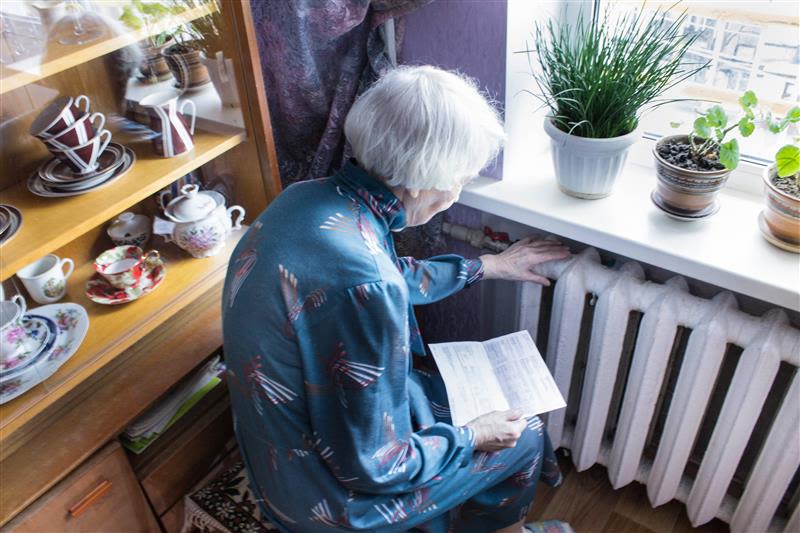
Fracking's back on the menu, but is it half-baked?
Laurence Stamford

The UK and other European countries are facing a severe energy crisis, with the potential to place more than 8 million UK households in fuel poverty this winter. This ‘energy’ crisis is more accurately a natural gas crisis, driven mostly by restrictions on Russian gas supply to Europe. In one of her first initiatives as Prime Minister, Liz Truss chose to lift the moratorium on UK shale gas production which has been in place since 2019. The announcement claimed that this could ‘get gas flowing in as soon as six months’. But does this move have any merit and, more importantly, will it actually help struggling households? In this blog, Dr Laurence Stamford argues that the answer to both questions is ‘no’.
- UK gas prices recently peaked at 10 times higher than usual.
- Shale gas production (via fracking) will take years to make a substantial contribution to the UK’s supply, providing 5% by 2027 at the earliest under the industry’s own estimates.
- The volumes producible from the UK are insufficient to noticeably affect consumers’ bills.
- New fossil fuel reserves should not be developed. Consumer bills and decarbonisation can both be tackled more effectively via energy conservation and low-carbon generation.
In November 2019 a shale gas moratorium was introduced in England. A few months later, then-energy minister Kwasi Kwarteng stated that ‘fracking is over’ and the Government ‘has moved on’. However, this is now being reversed due to the Russian invasion of Ukraine and the explosive rise in UK gas prices which hit 10 times the average of the last decade in August 2022 (exacerbated by the closure of Centrica’s Rough storage facility in 2017 – which provided about 70% of national storage.)
This renewal of shale gas exploration and production takes us back to the controversy of a decade ago, and is sparking headlines about an ‘energy goldmine’ and claims that ‘fracking could soon overtake the amount of gas extracted from the North Sea’.
A timely solution?
The claim above that shale gas will overtake North Sea output ‘soon’ does not reflect the facts. It is based on a National Grid report positing that this could happen, but not until 2038, by which point North Sea output will have been greatly depleted. The same report estimates that production starts slowly from 2026 onwards, and this leads to the first problem with the shale gas revival: UK producers will take years to go from exploration and start-up, to small-scale commercial production, to serious volumes of gas. The Government’s announcement referring to gas flowing ‘in six months’, whilst technically possible, is deeply misleading, as this refers to gas extracted during exploration and testing, with any significant gas production taking years to materialise.
National Grid expects a 2026 start date for shale gas. Even the industry body UKOOG (UK Onshore Oil and Gas), which represents oil and gas producers and other industry interests, expects something similar: their central scenario, published in 2019, estimates that annual production will take 15 years of development to reach its peak. Starting now, that is 2037. If we do indeed assume that the industry starts now, and that the current crisis persists for five years until 2027, UKOOG’s own estimates show that shale would only provide about 5% of demand by then. This is not enough to influence gas prices, particularly in the short term
Making a difference to bills?
In 2018, two colleagues and I published a paper which estimated the life cycle costs of shale gas in the UK. We found that, due to technical, geological and regulatory differences, UK shale gas would be around three times more expensive than shale gas in the USA, twice as expensive as imported LNG, and a third more expensive than North Sea gas. In other words, it is not a fundamentally cheap energy source.
Since then, regional gas prices have risen dramatically. However, as outlined above, the volumes that could be produced in the UK are not remotely sufficient to adjust those prices noticeably. A September 2022 letter to the prime minister written by the Committee on Climate Change and the National Infrastructure Commission agreed, saying that our gas reserves (both conventional and shale) are ‘too small to impact meaningfully the prices faced by UK consumers’.
Without enormous gas volumes that are outside the realms of possibility, a UK shale industry would simply be selling gas into an expensive market without materially affecting prices. And they cannot be expected to sell at a discount for UK consumers.
Finding a way forward
As we face the gas crisis, we also face the threat of unmitigated climate change, and strategic decisions should be taken in that context. Because of this, the IEA recently concluded that no new oil and gas resources should be exploited anywhere in the world from 2021 onwards. Clearly, this precludes a UK shale gas industry. So how could we address the gas crisis in a decarbonising world?
Demand reduction is the first port of call to save people money and tackle climate change. A serious energy efficiency programme for British buildings is required. The cost of the Truss Government’s Energy Price Guarantee is estimated at £120 billion, in comparison with the Government’s 2019 manifesto pledge to spend just £9.2bn over four years on insulation and energy efficiency.
Nearly 19 million UK homes have EPC ratings of D or lower. It has been estimated that raising all of them to a ‘C’ rating by adding insulation (cavity wall, loft, and solid wall) would cost £35-65 billion. Going further to include low-carbon heating technologies (such as heat pumps) across the entire country might cost £250 billion. And as our 2021 paper showed, heat pumps and insulation should be prioritised to reach Net Zero in the heating sector. This is the type of ambition required, and would have huge impacts on energy bills. Not all of the capital cost has to be funded by taxpayers: for instance, Germany expects to raise around €10 billion using a windfall tax on energy generators, the likes of which has been rejected by the UK Government.
Renewable electricity from wind and solar has been the cheapest form of energy in the UK for several years. In fact, since wholesale electricity prices have been above £100/MWh since September 2021, the Contract-for-Difference scheme means that renewable electricity generators are literally paying the Government money, contributing to lowering bills. It should be remembered that vastly more low-cost renewable energy would be in a similar position had the government not severely restricted onshore wind development from 2015 to 2020.
Consequently I suggest that the logical way forward is an increased roll-out of low carbon energy generation in the form of onshore/offshore wind, solar and arguably nuclear, accompanied by a vast and immediate programme to insulate the UK’s homes and retrofit heat pumps wherever possible. Fracking is an unnecessary distraction.
Laurence Stamford joined the Department of Chemical Engineering & Analytical Science as a lecturer in sustainable chemical engineering in 2014. He was promoted to senior lecturer in 2020. His main interest is the role of new technologies in sustainable development, and has applied concepts such as life cycle thinking, circular economy and eco-efficiency to the energy sector (nuclear, gas, wind, solar, storage, future scenarios), the food sector, and bio-processes.
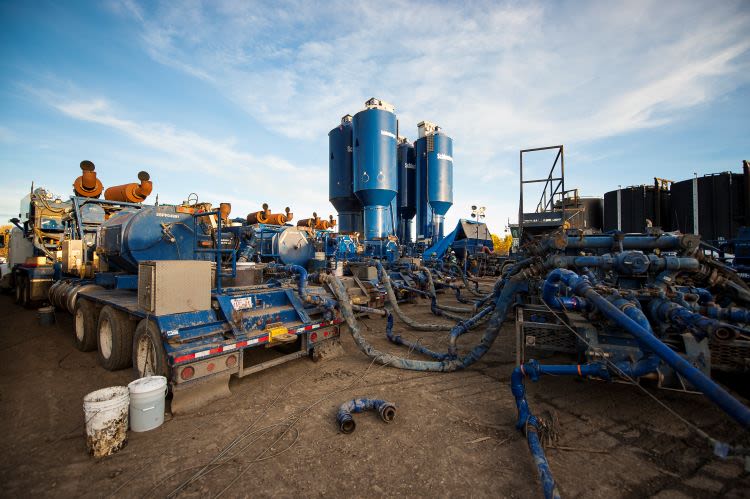
The importance of mapping in the shift to net zero
Dr Charlotte Brown, Hannah Charles, Dr Rob Bellamy
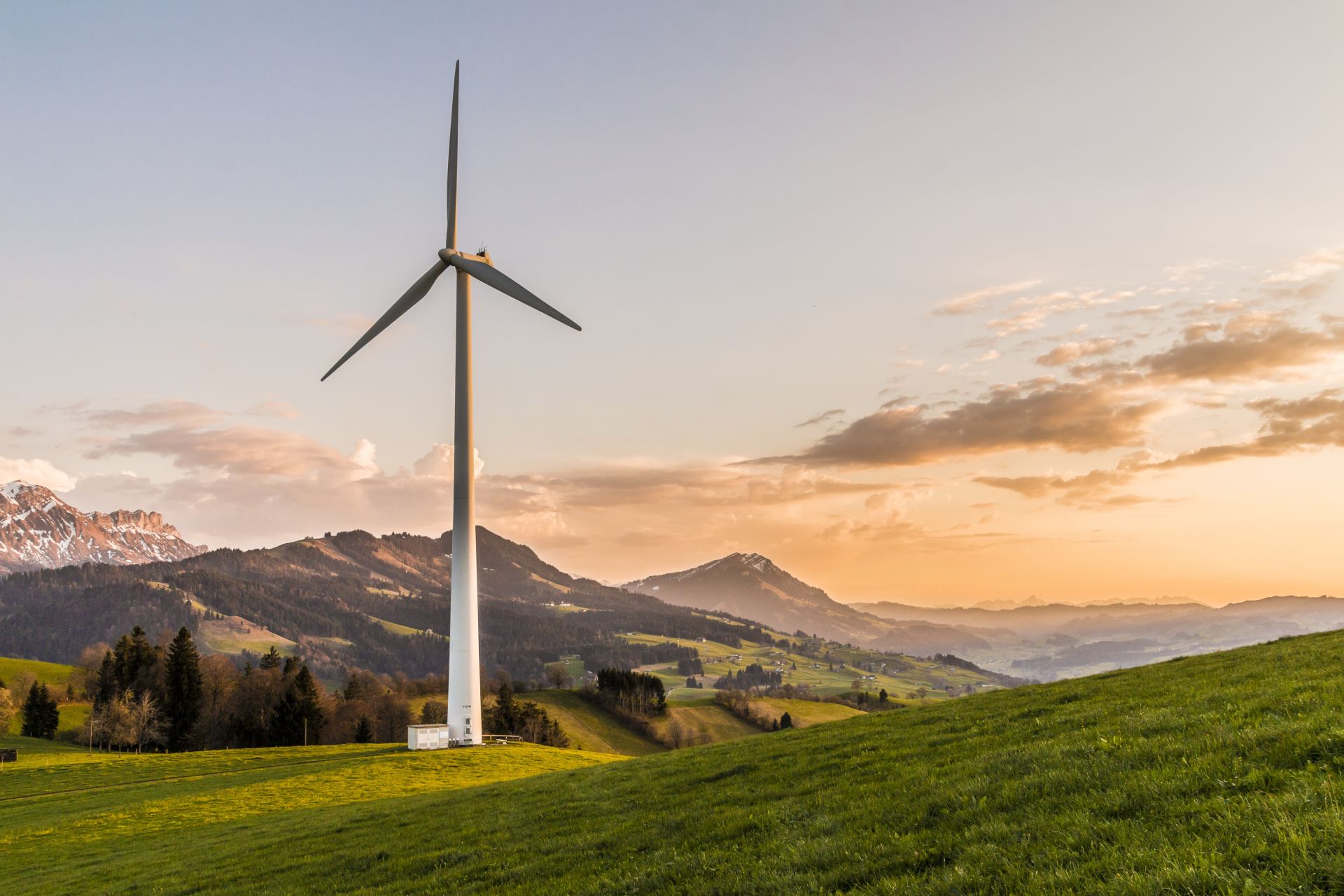
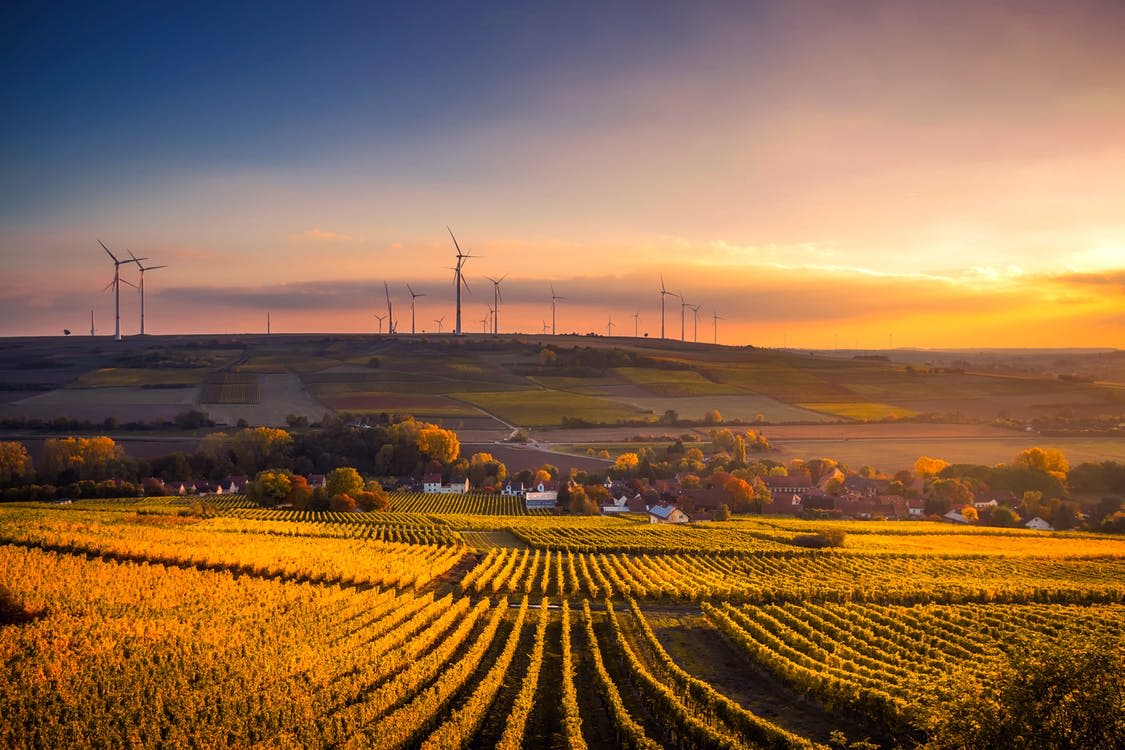
Delivering on net zero energy requires the radical transformation of our whole energy system from supply and distribution to demand. In this blog, Charlotte Brown, Hannah Charles and Rob Bellamy explore three topics that illustrate the importance of mapping in relation to low carbon energy transitions and their implications for policy.
- Policymakers should go ‘beyond consultation’ and widen participation in energy policy development by engaging with groups and communities already working and invested in local energy systems.
- Energy policy should become decentralised and place-based. Local communities involved in energy systems should be included as stakeholders in developing local plans for energy systems, as they are likely to understand local contexts and place-based needs for the communities.
- Local energy policies should be informed by data collection and mapping to provide a robust basis for decision making on what policy should look like.
Procedural justice and energy anxiety
Procedural justice refers to how energy justice depends on inclusive and fair consultative engagement, with high quality information provided and opportunities to revoke unjust decisions. It can be ensured when policymakers consult and map the perspectives of those affected by suggested policies. Without these engagement opportunities to gather knowledge from a range of backgrounds, policymakers run risks of worsening equality issues or embedding marginalised groups in poor conditions.
Understanding and engagement with the energy system is impacted by multiple locational aspects on varying scales. Understanding the characteristics of local areas is also essential to understanding users and interpreting results of engagement.
One example of procedural justice being overlooked in the UK’s shift to net zero is the push to include smart meters and heat pumps in homes. Heat pumps use electricity to heat homes, and smart meters make visible the amount of electricity used in homes. Together, these pieces of technology are meant to enable individuals to reduce their energy usage, and empower citizens to take environmental action through reduced electricity use and carbon emissions.
However, in practice, heat pumps can use lots of electricity, particularly when homes are poorly insulated or when pumps are improperly fitted. Smart meters have also been shown to increase anxiety and stress amongst people who are financially precarious when paying energy bills. When stress associated with energy use is compounded by increased energy use, this can cause individuals in precarious financial situations further anxiety. As energy costs soar during a cost of living crisis, this anxiety is only expected to get worse.
Mapping engagement: beyond consultation
The success of any transition to a low carbon energy system depends on society’s engagement, from examining support for particular policies and changing energy behaviours to underpinning deeper forms of citizenship in energy governance. Much like the transformation of technical aspects of energy systems, meaningful engagement must take a whole systems approach. This means mapping diverse ways in which people engage with the energy system on an ongoing basis.
Crucially, it means mapping citizen-led engagements with issues and actions relating to the energy system, as well as those led by institutions. Comparative case mapping can help in this process by accounting for uninvited communities such as activists, protesters, energy poverty action groups, energy cooperatives, and community energy groups, as well those typically engaged via consultations, opinion surveys, deliberative processes, behaviour change initiatives, and smart meter trials.
Using approaches like this can open up a variety of ways people can engage and develop new methods for evaluating sustainable energy futures. For example, distributed deliberative mapping sees typical ways of engaging the public joined by activist, grassroots innovator, and consumer-based engagements. The results are very different to conventional ‘top down’ approaches to engagement. Across different groups, a variety of problem definitions go far beyond common energy problems and a greater diversity and range of technical and social criteria with which low-carbon energy futures are appraised.
The study shows centralised energy systems, such as business as usual and large-scale technologies, perform much lower than decentralised alternatives, such as a smart-tech society and local energy partnerships. Rather than focusing on getting views of ‘representative’ mini-publics to inform centralised decisions made by those managing ‘the transition’, distributed deliberative mapping method can support much more distributed modes of governing and democratising sustainable energy futures.
Spatial mapping and data informed decisions
Understanding a locations impact on user views and interactions with the energy system is also important. Spatial mapping of influencing factors is one example of this, which includes consideration of anything from local climate, to socio-demographic characteristics, and cultural information about local areas.
For example, geo-referenced data about whether houses retain heat well in winter and keep cool in summer could help smart meters to be installed in suitable homes with the suitable thermal characteristics. The data could also be used to avoid installing smart meters in unsuitable homes, or to flag households where additional financial or educational support might be needed post installation.
Individual’s assessments of homes can provide this information on homes thermal characteristics however, this is costly and time-consuming. A method developed using data from Greater Manchester, and later applied to Bristol as part of investigating heat vulnerability and focussing on summer overheating in homes and the need for cooling, has mapped homes and their thermal characteristics across entire cities using open source data. This has allowed individual addresses to be scored on their comparative risk across the city’s housing stock. It has also allowed specific neighbourhoods which are ‘at risk’ to be identified.
Though this work focussed on summer overheating, the method and data could be used to understand spatial distributions of winter energy poverty. These maps can be overlain with other geographic data sets and can be useful in prioritising energy policy, understanding impacts of energy policy and indeed interpreting outcomes of comparative mapping and other engagement activities by offering insights to drivers of variations in opinions.
Policy recommendations
So what are the policy implications of mapping citizen perspectives in support of procedural justice, societal engagement in support of more democratic, robust and acceptable transitions, and spatial mapping in prioritising energy policy and understanding the impacts of energy policy?
- The likelihood of achieving procedural justice within energy policy is low without data collection on needs and perspectives, so citizen perspectives and spatial information must be gathered. Without proper engagement, energy systems developed by policymakers could be inefficient and ineffective, or worsen access to energy justice.
- Policymakers should go ‘beyond consultation’ and widen participation by engaging with local energy groups in energy communities meeting spaces, and reaching out to people in community hubs such as faith centres, or schools. Once a wider variety of participants have been found, their responses can be mapped more effectively. Energy systems should not be developed by policymakers without taking proper consideration of local contexts and people’s needs, as without this, energy systems may remain ineffective and underused by local citizens.
- Energy systems should be decentralised. Local communities working towards developing a decentralised energy system (such as energy communities who are working towards local power production) should be included as stakeholders in developing local plans for energy systems, as they are likely to understand local contexts and place-based needs for the communities. Energy policy should be included in wider levelling up policy, with more powers being awarded to local authorities to build place-based energy strategies that address the specific energy needs of local communities.
- Data collection by local authorities should be innovative. For example, comparative case mapping and distributed deliberative mapping can provide a more socially robust basis for decision making on what our collective energy futures could – and should – look like. Local authorities should, if the skills do not already exist in their in-house data teams, seek the help of experts such as academics who are practised in these data collection methods.
- Superior spatial mapping of influencing factors, and more holistic and informative views of their individual interactions with the energy system, can be developed to help prioritise and tailor policy to a very local level.
Dr Charlotte Brown is researcher at the University of Manchester and a Climate Change Consultant for Arup. She specialises in Climate Change resilience and adaptation. Her research focuses on analysing heat risks and vulnerabilities in cities and using spatial data to help improve cities heat resilience. With past work focussing on Greater Manchester and recent work developing a heat resilience framework for Bristol City Council.
Hannah Charles is a PhD candidate at the University of Manchester, working alongside One Manchester to research the uptake and implementation of low carbon energy technology in social housing.
Dr Rob Bellamy is Presidential Fellow in Climate and Society in the Department of Geography at the University of Manchester. His research focusses on the social science of climate, nature, and technology.
Analysis and ideas on energy futures research and policy, curated by Policy@Manchester
With special thanks to our contributors:
Mike Barnes is a Professor in the Power Conversion group in the School of Electrical and Electronic Engineering. He is an Associate Editor of the IEEE Transactions on Energy Conversion
Jonatan Pinkse is a Professor of strategy, innovation, and entrepreneurship, and Executive Director of the Manchester Institute of Innovation Research (MIoIR), Alliance Manchester Business School, The University of Manchester. His research interests focus on corporate sustainability, business model innovation, social entrepreneurship, cross-sector partnerships, and the sharing economy.
Francis Livens is Director of The University of Manchester’s Dalton Nuclear Institute and Professor of Radiochemistry. He has acted as an advisor to the nuclear industry both in the UK and overseas and holds a range of external roles, including Chair of the Nuclear Innovation and Research Advisory Board (NIRAB) and a member of the Nuclear Decommissioning Authority Board.
Dr Rob Bellamy is Presidential Fellow in Climate and Society in the Department of Geography at the University of Manchester. His research focusses on the social science of climate, nature, and technology.
Stefan Bouzarovski is Professor of Human Geography at The University of Manchester, where he leads the Manchester Urban Institute’s People and Energy Collective.
Amish Sarpotdar is a Postdoctoral Research Associate on the Fuel and Transport Poverty in UK's Energy Transition project. He is developing methods to map vulnerabilities to energy and transport poverty in the UK.
Kate Scott holds a NERC (UK Natural Environment Research Council) Industrial Innovation Fellowship on implementing a climate compatible Industrial Strategy for the UK. She is developing methods to downscale global climate assessments for local-level decision making across sectors in order to facilitate the delivery of a climate compatible Industrial Strategy. The project brings together climate science, government policy and private companies to ensure tackling climate change is incorporated into building a resilient, sustainable and competitive future for UK industry.
Manon Burbidge is a Research Associate at the University of Manchester. She works on Horizon 2020 and Interreg projects in the domain of energy poverty, renewable energy, energy communities and energy justice.
Claire Brown is a PhD Researcher at the Tyndall Centre for Climate Change Research at The University of Manchester. Her research focuses on addressing issues around heating and cooling demand in social housing in the UK.
Laurence Stamford is Senior Lecturer in Sustainable Chemical Engineering at The University of Manchester. His main research interest is the role of new technologies in sustainable development, and has applied concepts such as life cycle thinking, circular economy and eco-efficiency to the energy sector (nuclear, gas, wind, solar, storage, future scenarios), the food sector, and bio-processes.
Dr Charlotte Brown is researcher at The University of Manchester and a Climate Change Consultant for Arup. She specialises in Climate Change resilience and adaptation. Her research focuses on analysing heat risks and vulnerabilities in cities and using spatial data to help improve cities heat resilience. With past work focussing on Greater Manchester and recent work developing a heat resilience framework for Bristol City Council.
Hannah Charles is a PhD candidate at the University of Manchester, working alongside One Manchester to research the uptake and implementation of low carbon energy technology in social housing.
At Manchester, our energy experts are committed to delivering an equitable and prosperous net zero energy future. By matching science and engineering, with social science, economics, politics and arts, the University’s community of 600+ experts address the entire lifecycle of each energy challenge, creating innovative and enduring solutions to make a difference to the lives of people around the globe. This enables the university's research community to develop pathways to ensure a low carbon energy transition that will also drive jobs, prosperity, resilience and equality.
All opinions and recommendations made by article authors are made on the basis of their research evidence and experience in their fields. Evidence and further discussion can be obtained by correspondence with the authors; please contact policy@manchester.ac.uk in the first instance.
Read more and join the debate at: blog.policy.manchester.ac.uk
www.policy.manchester.ac.uk
@UoMPolicy #EnergyFutures
July 2022
The University of Manchester
Oxford Road, Manchester
M13 9PL
United Kingdom
The opinions and views expressed in this publication are those of the respective authors and do not necessarily reflect the views of The University of Manchester.

